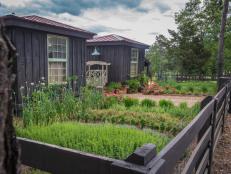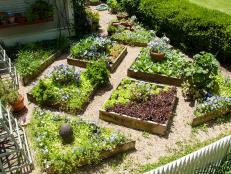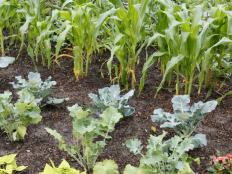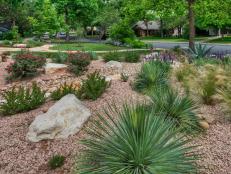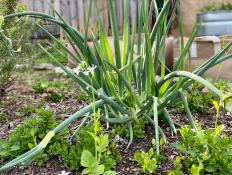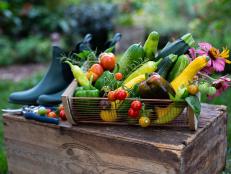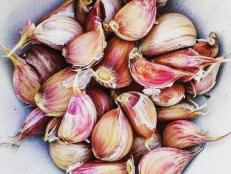Edible Landscaping: Growing Your Own Food
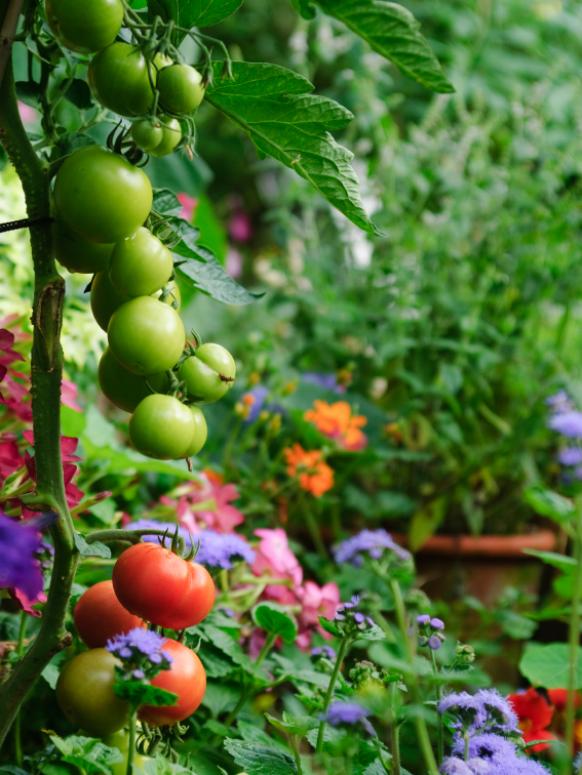
Growing fruit- and vegetable-bearing plants in your backyard is a great way to eat healthier, save money and reduce your impact on the environment — and it's not as difficult as you might think. It can be easy and beneficial to integrate edibles into your overall landscape design. You don't have to be a farmer to appreciate food from your own yard — in fact, you don't even have to have a traditional vegetable garden.
"It's not unusual to find edibles and ornamental (plants) coexisting, even if the owner isn't particularly interested in the possibility of a harvest," says Kris Bordessa, a former L.A.-based landscape architect who now lives on the big island of Hawaii and writes about landscapes and gardening at her Attainable Sustainable website.
Rosemary is a good example of this, she says. "It's available in quite a few cultivars, several of which are excellent groundcovers in dry conditions." But this undercover herb isn't the only edible plant that could — and maybe even should — already be a part of your garden. Make your plantings (and your kitchen creations) fresher and healthier by growing a gastronomically genius garden.
Plants That Look Good Enough to Eat
It's a misconception that fruits and vegetables are more about function (and harvest) than form. Many edible plants are botanical beauties in their own right. "Rhubarb, with its big, bold leaves, is a great landscape plant even if nobody ever harvests the stems," Kris says. "And strawberries make a good groundcover plant that will stay green throughout the growing season."
And some of the prettiest edibles come not from groundcover or small plants, but from trees. Many of the most beloved blossoming branches — like those on cherry, pear and plum trees — are modified versions of former fruit-bearing varieties. "The 'mess' of having fruit drop made the fruitless versions attractive (for a while), but I think the tide is changing," Kris says. "The idea of harvesting a crop and enjoying the flowers — as Mother Nature intended — has once again become desirable."
Designing an Edible Landscape
See All PhotosFlowers and Food, so Healthy Together
Farmers and backyard gardeners who use organic methods of pest control have long known what many other people are now finding out: Interspersing plants and vegetables can be a mutually beneficial arrangement. "Some flowers, like marigolds and nasturtiums, help repel certain insects that can cause damage to crops," Bordessa says. "And herbs like coriander, parsley and dill will attract beneficial insects like ladybugs who keep aphid infestations at a minimum."
Small-Space Edible Landscapes
See All PhotosDigging In Can Be Delicious
If all this talk about adding food to your flora has whet your gardening appetite, remember the first step to starting these plants is understanding them. "Some of these plants may start out cute and tiny, but they can get quite large," Kris says. "And while most vegetables like full sun, some do appreciate afternoon shade, especially in really hot locations." Talk to local nurseries and other gardeners to find out which edibles will thrive in your climate.
And remember, you don't have to go full-fledged food to add edible plants to your garden. "Lavender is well-loved for its scent, but the flowers can also be used in baking," Kris says. "Nasturtium and pansy flowers can be added to salads. And we can even give a nod to something not usually welcome in either vegetable or flower garden: Dandelion leaves are considered an early 'spring green' by some people!"
So no matter whether you're looking to dig in and veg out or you just want to add a few potential kitchen partners without disrupting your overall landscape, rest assured you can create a delicious design with plants that are, quite literally, good enough to eat.






